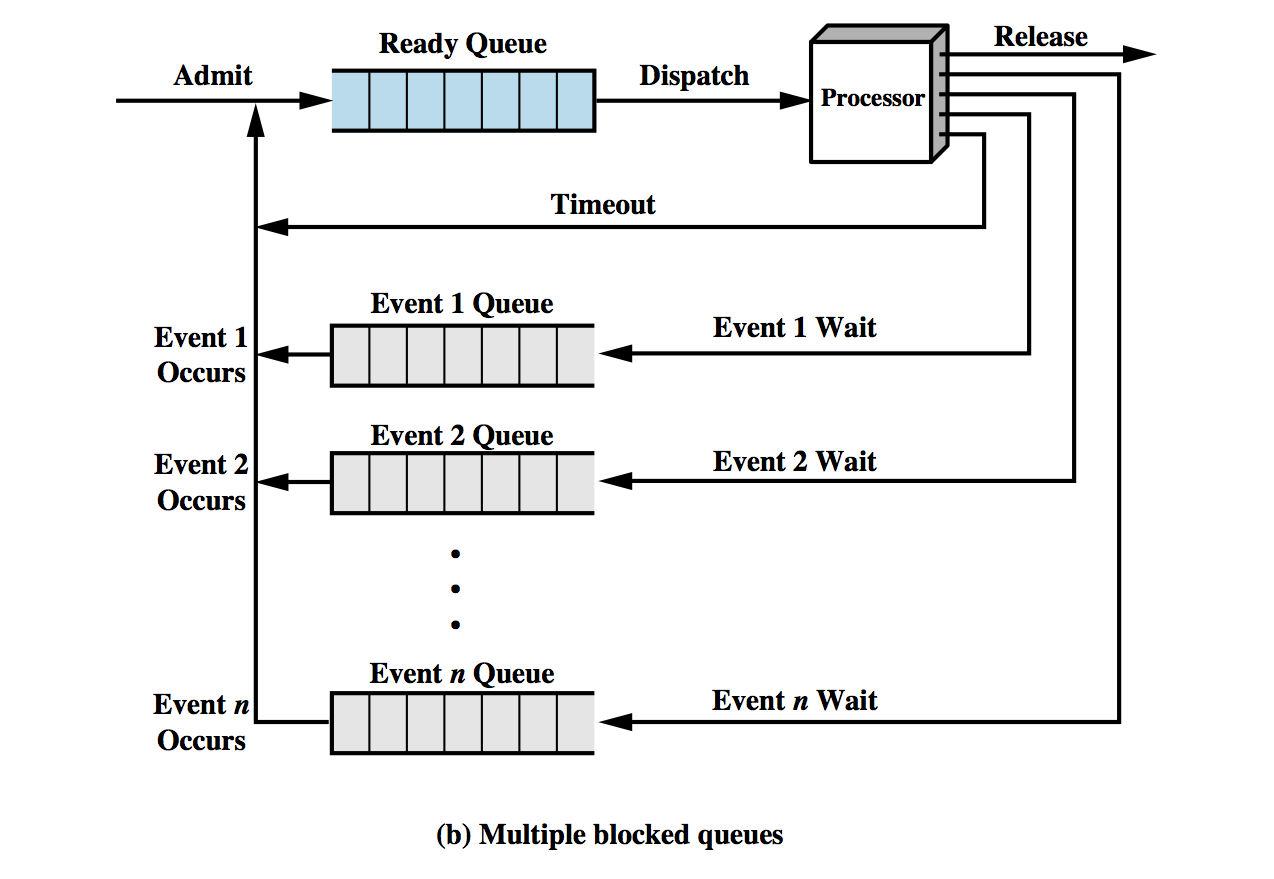COMP3891
Processes and Threads
We often require an operating system to be able to:
- Interleave execution of several processes to maximise processor utilisation while providing reasonable repsonse time.
- Allocate resources to processes.
- Support interprocess communication and user creation of processes.
Overview of Process Model
Processes
- Also called “task” or “job”.
- Execution of an individual program.
- Owner of resources allocated for program execution.
- Encompasses one or more threads.
Threads
- Unit of execution.
- Can be traced
- List the sequence of instructions that execute.
- Belongs to a process
- Executes within it.
Multiprogramming
- One physical program counter switches between processes.
- Conceptual model of multiple independent, sequential processes (with a single thread each).
- Only one program active at any instant on CPU (pseudoparallelism).
Implementation of Processes
A processes’ information is stored in a process control block (PCB). PCBs together form a process table.
Example Process Table Entry Fields
|Process Management|Memory Management|File Management| |–|–|–| |Registers|Pointer to text segment|Root directory| |Program counter|Pointer to data segment|Working directory| |Program status word|Pointer to stack segment|File descriptors| |Stack pointer||File descriptors| |Process state||User ID| |Priority||Group ID| |Scheduling parameters||| |Process ID||| |Parent process||| |Process group||| |Signals||| |Time when process started||| |CPU time used||| |Children’s CPU time||| |Time of next alarm|||
Lifecycle of a Process
Process Creation Causes
- System initialisation:
- Foreground processes (interactive programs).
- Background processes.
- Email server, web server, print server, etc.
- Called a daemon (Unix) or service (Windows).
- Execeution of a process creation system by a running process.
- New login shell for an incoming SSH connection.
- Users request to create a new process.
- Initiation of a batch job.
Process Termination Conditions
- Normal exit (voluntary).
- Error exit (voluntary).
- Fatal error (involuntary).
- Killed by another process (involuntary).
Process/Thread States
- Running (actually using CPU at that instant)
- Blocked (unable to run until some external event happens)
- Ready (runnable; temporarily stopped to let another process run)
Events That Cause Process Transitions
- Ready to Running:
- All other processes have ran enough (scheduler decides to pick this process to run).
- Running to Ready:
- Voluntary
Yield(). - End of timeslice (scheduler decides running process has run long enough).
- Voluntary
- Running to Blocked:
- Waiting for input:
- File or network, etc.
- Waiting for a timer (alarm signal).
- Waiting for a resource to become available.
- Waiting for input:
- Blocked to Ready:
- Resource on which process was originally waiting on becomes available.
Scheduler
Scheduler decides which of the Ready processes to run. There are various algorithms for scheduling.
Two Queue Algorithm
- Queue for ready events and for blocked ev-ents.
-
Avoids scanning list of processes to select one to make ready.
Multi Queue Algorithm
- Having one blocked queue is inefficient as one resource being blocked has no effect on another resource.
-
Use a (shorter) blocked queue for each resource.

Thread Model
Thread vs Process
|Per process items|Per thread items| |-|-| |Address space|Program counter| |Global variables|Registers| |Open files|Stack (local variables)| |Child processes|State| |Pending alarms|| |Signals and signal handlers|| |Accounting information||
Thread Usage
|Model|Characteristics| |-|-| |Threads|Parallelism, blocking system calls| |Single-threaded process|No parallelism, blocking system calls| |Finite-state machine|Parallelism, nonblocking system calls, interrupts|
Why Threads?
- Simpler to program than state machine.
- Less resources than a complete process:
- Cheaper to create and destroy.
- Share resources (especially memory) between them.
- Performance: Threads waiting for I/O can be overlapped with computing threads.
- Note: if all threads are compute bound, then no performance improvement on a uniprocessor.
- Threads can take advantage of parallelism available on machines with multiple processors.